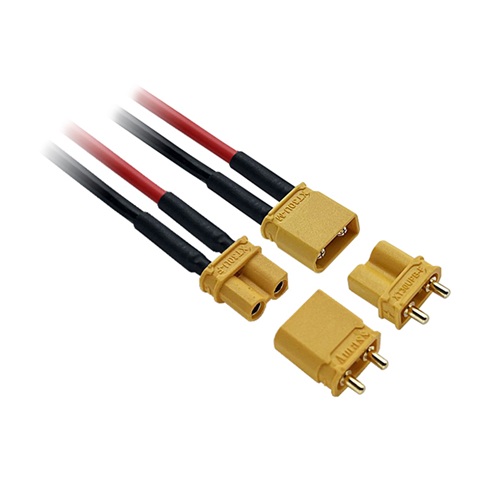Mit der rasanten Entwicklung von Elektrofahrzeugen (EVs) ist der Kabelbaum zu einem wichtigen Rückgrat der elektrischen und elektronischen Architektur des Fahrzeugs geworden. Mit der zunehmenden Integration autonomer Fahrtechnologien und fortschrittlicher Fahrerassistenzsysteme (ADAS) steigen die Anforderungen an EV-Kabelbäume werden immer strenger. Die Gewährleistung von Sicherheit, Zuverlässigkeit und Effizienz ist nicht länger optional – sie ist eine Notwendigkeit für Hersteller und Zulieferer, die auf dem globalen Markt wettbewerbsfähig bleiben wollen.

Der Kabelbaum fungiert als „Nervensystem“ des Elektrofahrzeugs. Es überträgt Strom und Signale an alle Komponenten, vom Akkupack bis hin zu Sensoren, Kameras, Radargeräten und Steuergeräten. In autonomen und mit ADAS ausgestatteten Fahrzeugen muss der Kabelbaum Folgendes unterstützen:
Hochgeschwindigkeitsdatenübertragung für Kameras, LiDAR, Radar und Ultraschallsensoren.
Hochspannungsversorgung zu Batterien, Wechselrichtern und Motorsteuerungen.
Signalintegrität um sicherheitskritische Funktionen wie Notbremsung oder Spurhalten zu gewährleisten.
Ohne ein robustes Kabelbaumsystem können selbst die fortschrittlichsten ADAS-Technologien nicht zuverlässig funktionieren.
Autonome und ADAS-Funktionen basieren auf mehreren Sensoren, die große Datenmengen erzeugen. Der Kabelbaum muss Hochgeschwindigkeits-Ethernet-Kabel, Koaxialkabel und Glasfaser um eine Echtzeitkommunikation zwischen elektronischen Steuergeräten (ECUs) sicherzustellen.
Elektromagnetische Störungen (EMI) können die Signalgenauigkeit beeinträchtigen. Abgeschirmte Kabel und optimierte Kabelbaum-Layouts sind für die Wahrung der elektromagnetischen Verträglichkeit (EMV) unerlässlich, insbesondere in Fahrzeugen mit mehreren Hochfrequenzgeräten.
Bei Elektrofahrzeugen wirkt sich die Gewichtsreduzierung direkt auf die Reichweite aus. Aluminiumverkabelung, optimierte Verlegung und modulare Kabelbaumstrukturen kann dazu beitragen, das Gesamtgewicht des Fahrzeugs zu reduzieren und gleichzeitig die Leistungsstandards zu erfüllen.
Kabelbäume müssen rauen Bedingungen standhalten, einschließlich hohe Temperaturen, Vibrationen, Biegungen und chemische BelastungenModerne Isoliermaterialien wie vernetztes Polyethylen (XLPE) oder Fluorpolymere sorgen für die nötige Haltbarkeit.
Da ADAS-Systeme sicherheitskritische Funktionen steuern, müssen Kabelbäume so konstruiert sein, redundante Pfade, Feuerbeständigkeit und Einhaltung der ISO 26262-Standards (funktionale Sicherheit).
Autonome Elektrofahrzeuge arbeiten oft mit 400-V- bis 800-V-Systeme. Kabelbäume müssen die Anforderungen an die Hochspannungsisolierung erfüllen und gleichzeitig den Leistungsverlust minimieren und die Sicherheit des Bedieners gewährleisten.
Komplexität: Die Anzahl der Sensoren, Kameras und Module erhöht die Komplexität der Verkabelung.
Platzbeschränkungen: Kabelbäume müssen in die kompakte EV-Architektur passen, ohne den Luftstrom oder die Kühlung zu beeinträchtigen.
Kostendruck: Hersteller müssen hohe Leistungsanforderungen mit kosteneffizienten Materialien und einer kosteneffizienten Produktion in Einklang bringen.
Zonale Architektur – Anstelle eines großen Kabelbaums werden in Fahrzeugen Zonensysteme eingesetzt, die die Kabellänge und das Gewicht reduzieren.
Hochspannungsnormung – Standardisierte HV-Steckverbinder und Kabelbäume für EV-Plattformen werden die Fertigung rationalisieren.
Intelligente Geschirre – Einbindung von Diagnosefunktionen zur Echtzeitüberwachung der Kabelbaumleistung.
Fortschrittliche Materialien – Breitere Verwendung leichter leitfähiger Materialien wie Aluminium und Verbundwerkstoffe.
Mit der zunehmenden Verbreitung des autonomen Fahrens und der ADAS-Technologie werden sich die Kabelbäume von Elektrofahrzeugen von einfachen Stromversorgungssystemen zu leistungsstarke Kommunikations- und SicherheitssystemeHersteller und Zulieferer müssen priorisieren Datenübertragung, Sicherheitskonformität, Gewichtsreduzierung und thermische Beständigkeit um den steigenden Anforderungen der Elektrofahrzeuge der nächsten Generation gerecht zu werden.
Die Investition in fortschrittliche Kabelbaumlösungen ist nicht mehr nur eine technische Entscheidung – es ist ein strategischer Schritt, um die Wettbewerbsfähigkeit auf den schnell wachsenden Märkten für Elektrofahrzeuge und autonome Fahrzeuge sicherzustellen.
STICHWORTE :